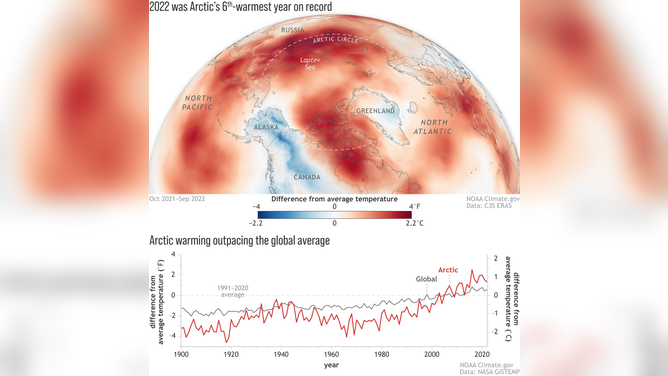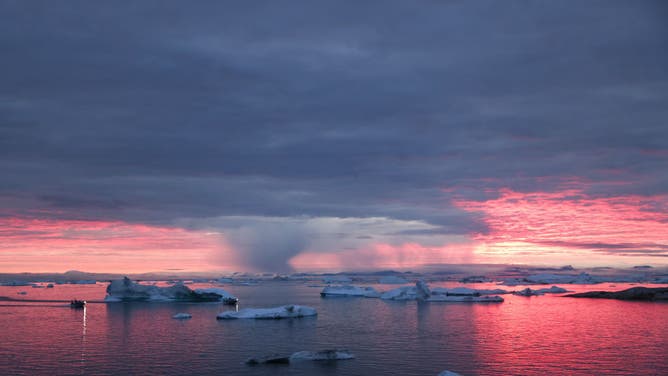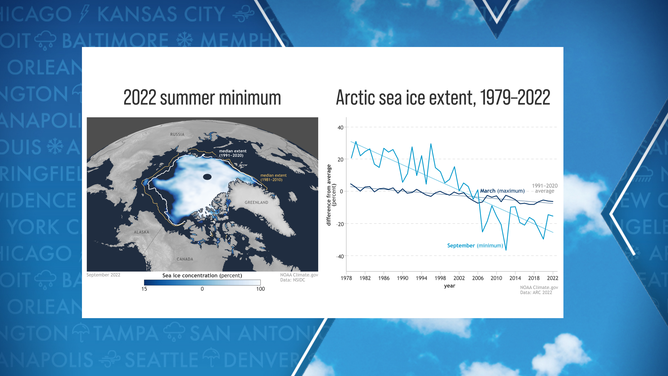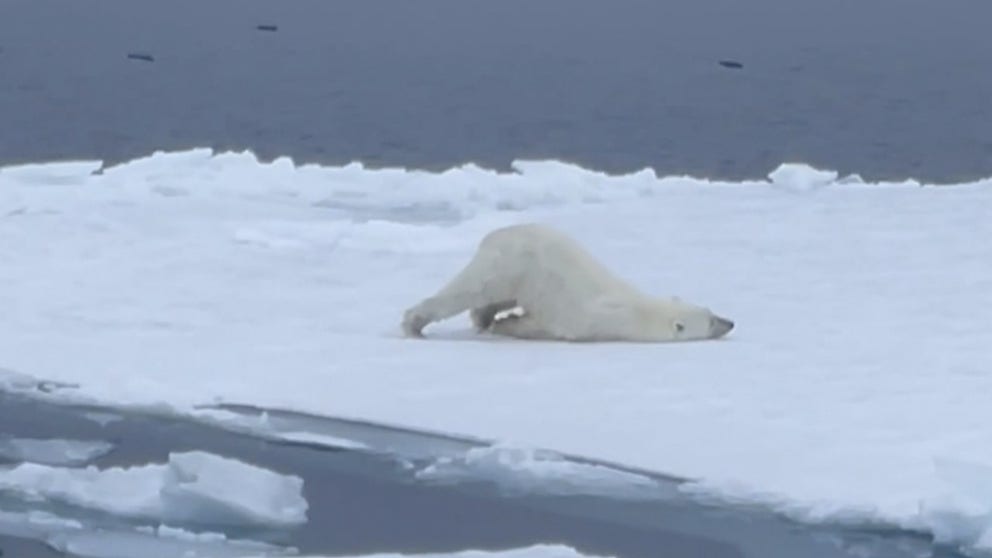Wetter, stormier Arctic leads to sixth warmest year on record
Arctic sea ice coverage was higher than in recent years but lower than the long-term average. NOAA's recent report says it is warming faster than any other part of the globe.
Polar bear scoots and slides along snowy ice sheets in the Arctic
A tourist captured images of the animal during an Arctic cruise. Her videos showed the polar bear, the largest carnivore species on the planet, acting as playfully as man’s best friend.
Remnants of a typhoon, smoke from wildfires and increasing rainfall were all part of the changing weather pattern over the Arctic, leading to the sixth-warmest year on record, the National Oceanic and Atmospheric Administration reported.
NOAA recently released its annual report card for the region that surrounds the North Pole, which experts believe is warming faster than any other part of the globe.
The agency said air temperatures from October 2021 through September 2022 were the sixth-warmest on record and were 1.3 °F warmer than the modern average.

The images depict the departure from the average near-surface temperature across the Arctic.
(NOAA)
Despite not setting an all-time record, the region’s last seven years have all ranked in the top warmest years since 1900.
The warmer air has led to less sea ice coverage and changes in precipitation and has impacted how humans adapt to the usually hostile region.
"Living and innovating in Arctic environments over millennia, Indigenous peoples have evolved holistic knowledge that provides resilience and sustainability," Jackie Qatalina Schaeffer, an Alaska native tribal member and director of climate initiatives, said in a statement.
65 DAYS OF NIGHT: ALASKA TOWN WON’T SEE THE SUN UNTIL JANUARY
The region has noticed a boom in maritime traffic as sea ice remains below levels seen in the 1980s and 1990s.
NOAA said the lack of ice had opened trade routes for ships traveling from the Pacific Ocean through the Bering Strait and the Beaufort Sea.
"The Arctic remains a varied and expansive region to monitor, especially as widespread disturbances unfold and seasons shift," said Matthew Druckenmiller, a research scientist at the National Snow and Ice Data Center.

ILULISSAT, GREENLAND - SEPTEMBER 04: The sun sets as rain falls beyond floating ice and icebergs in Disko Bay above the Arctic Circle on September 04, 2021 in Ilulissat, Greenland. 2021 will mark one of the biggest ice melt years for Greenland in recorded history.
(Photo by Mario Tama/Getty Images / Getty Images)
Satellite data for the year showed most of the Arctic region experienced above-average temperatures. Still, some places in Alaska, central Canada and Greenland bucked the trend and finished the year with cooler temperatures.
The cooler air masses weren’t significant enough to keep the year from entering the record books as another warm one.
In addition to temperature changes, NOAA reported wetter-than-normal conditions dominated much of the time period from October 2021 to September 2022, with heavier precipitation events becoming more common.
ALASKA, WASHINGTON NATIVE VILLAGES THREATENED BY CLIMATE CHANGE RECEIVE $75 MILLION TO RELOCATE
The combination of warming temperatures, less sea ice and increased precipitation have caused wild swings in the health of ecosystems.
While the frequency of large events of plankton has increased, animals such as ducks, auklets, shearwaters, murres and puffins continue to experience record die-offs.
"To understand its transition, we need local to international partnerships, especially with Arctic peoples and Indigenous communities, who are vital to the use of diverse observations and knowledge, as well as to identifying solutions to long-term climate impacts and abrupt disturbances," said Druckenmiller.

Arctic Ice Status
(NOAA)
